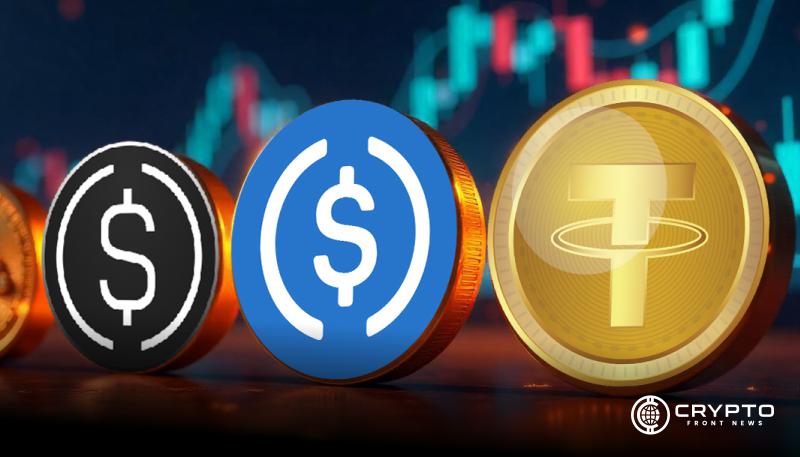- B2B stablecoin payments surged 113%, reaching $6.4B monthly and accounting for nearly two-thirds of total transactions.
- Circle’s USDC grew from 14% to 21% market share, while Tether maintained dominance with 79% of total stablecoin flows.
- The U.S. and Singapore led stablecoin adoption with 37% of global flows, showing strong growth beyond emerging markets.
Stablecoin transactions have had a sharp surge in 2025, with monthly payment volumes jumping 70% since February, according to new data from Artemis, Castle Island, and Dragonfly XYZ.
The study reveals that stablecoin payments climbed from $6.0 billion in February to $10.2 billion by August, setting an annualized pace of roughly $122 billion. This growth highlights how blockchain-based settlements are rapidly scaling into mainstream payment infrastructure.
B2B Transactions Dominate Stablecoin Activity
A key driver behind this growth has been the expanding role of business-to-business (B2B) payments. According to the report, B2B transaction volumes grew 113% since February, reaching $6.4 billion per month.
These payments now account for nearly two-thirds of total stablecoin usage. Other sectors have also grown, though at a slower pace. Card transactions increased by 36%, while business-to-consumer (B2C) payments rose 32%. Prefunding payments grew 61%, and peer-to-peer transfers held steady at around $1.6 billion monthly.
This shift toward B2B channels shows how companies are increasingly turning to stablecoins for settlement and cross-border transactions. The study, which collected insights from 22 firms and data from 11 others, shows a broader shift in how digital assets are now used for real-world payments.
Circle Gains Ground as Tether Retains Lead
While Tether continues to dominate the market, controlling 79% of total stablecoin payment flows, Circle’s USDC has shown notable progress. Since February, USDC’s market share increased from 14% to 21%. Analysts point to the growing adoption of USDC in regulated and institutional channels as a factor in its steady rise.
Meanwhile, the choice of blockchain networks continues to shape the market sector. Tron remains the largest network for stablecoin flows, handling 48% of total activity. Ethereum, however, has strengthened its position, expanding its share by 11% during the same period.
Global Growth Beyond Emerging Markets
The report highlights how stablecoin use is becoming increasingly global. The United States and Singapore now account for nearly 40% of all payment flows, at 18.7% and 18.4% respectively.
Hong Kong follows with 9.8%, while Japan and the United Kingdom hold 8% and 6.8%. These figures indicate that adoption is spreading beyond emerging markets and into advanced economies.
Although stablecoin payments still represent just 0.9% of Visa’s $13.2 trillion annual volume, they are growing nearly ten times faster year over year, according to Artemis. The findings suggest that blockchain-based payment systems are becoming an integral part of the growing global financial network.






